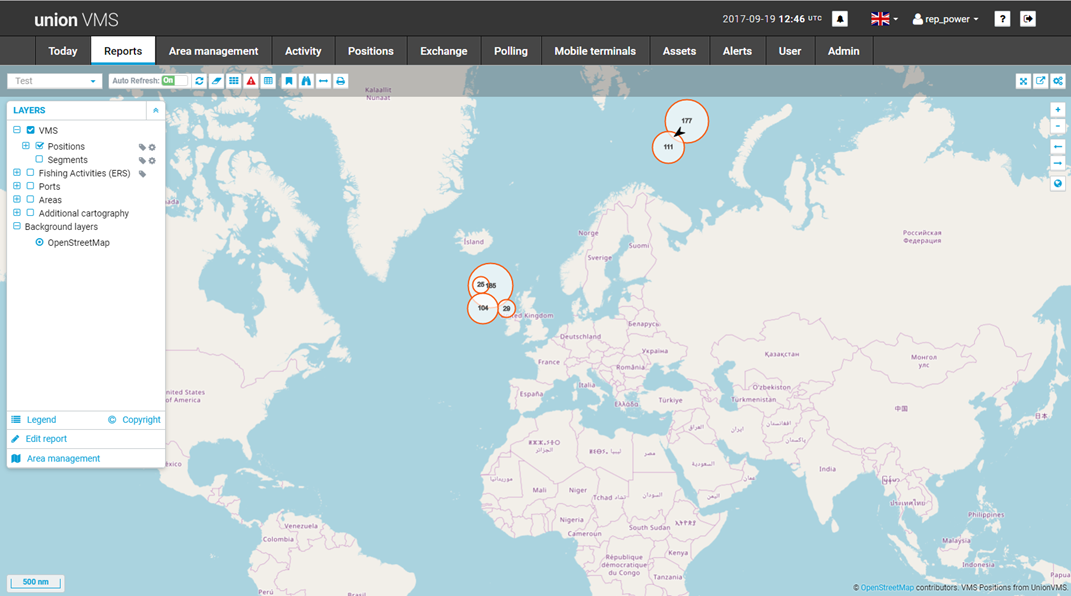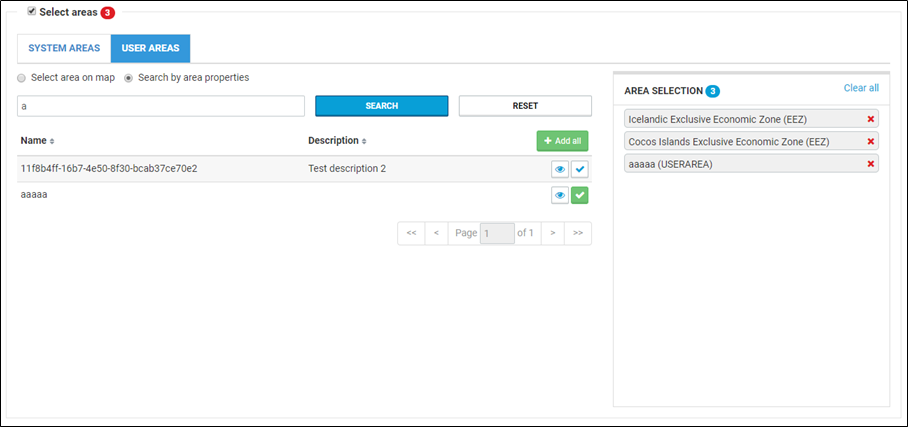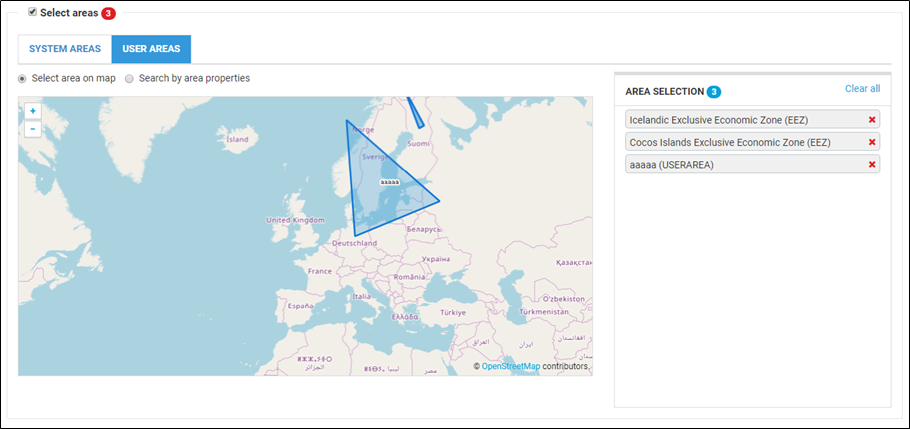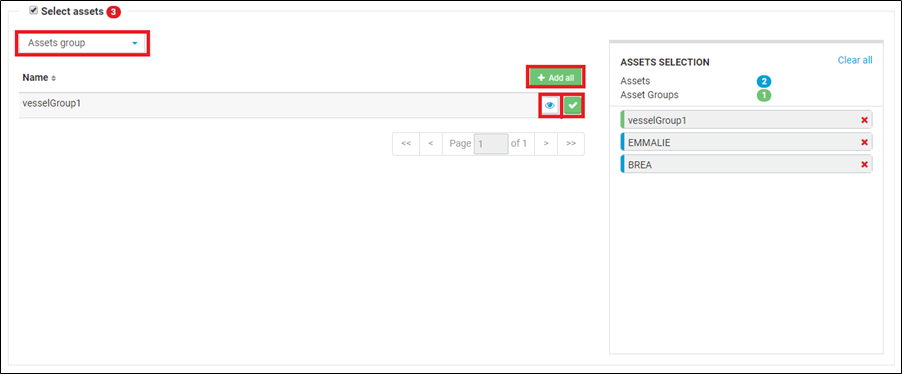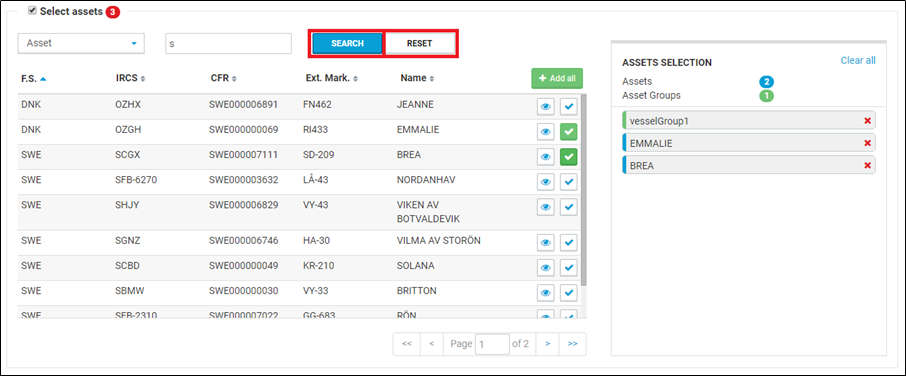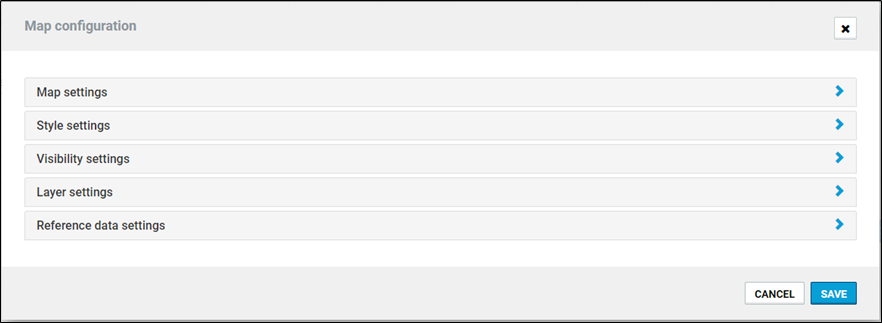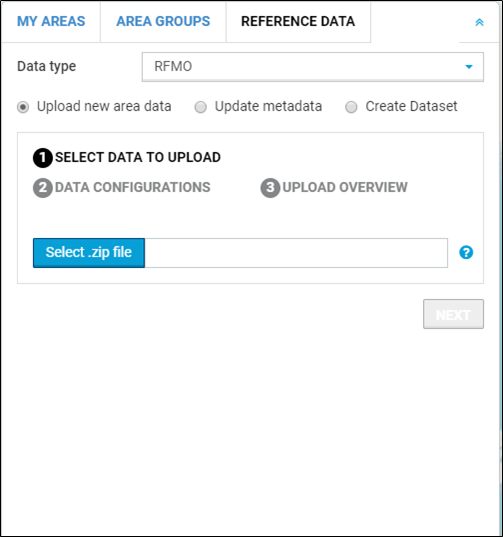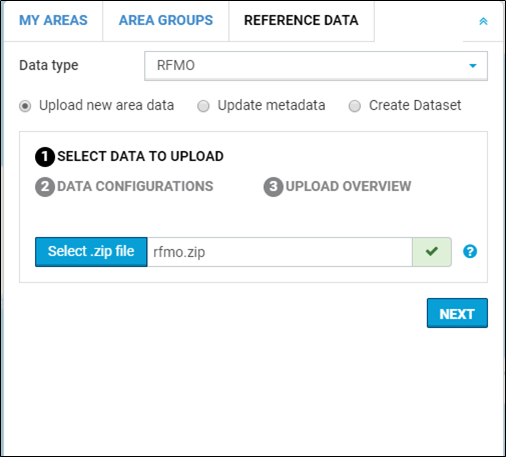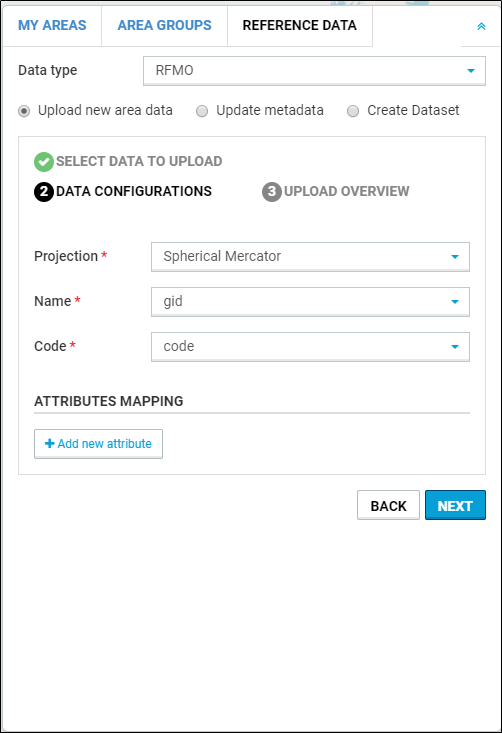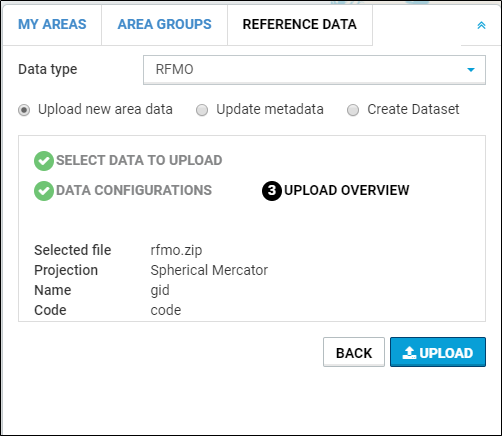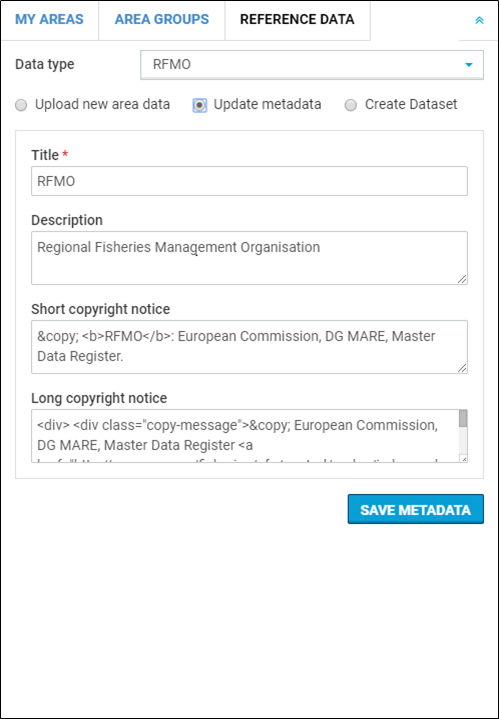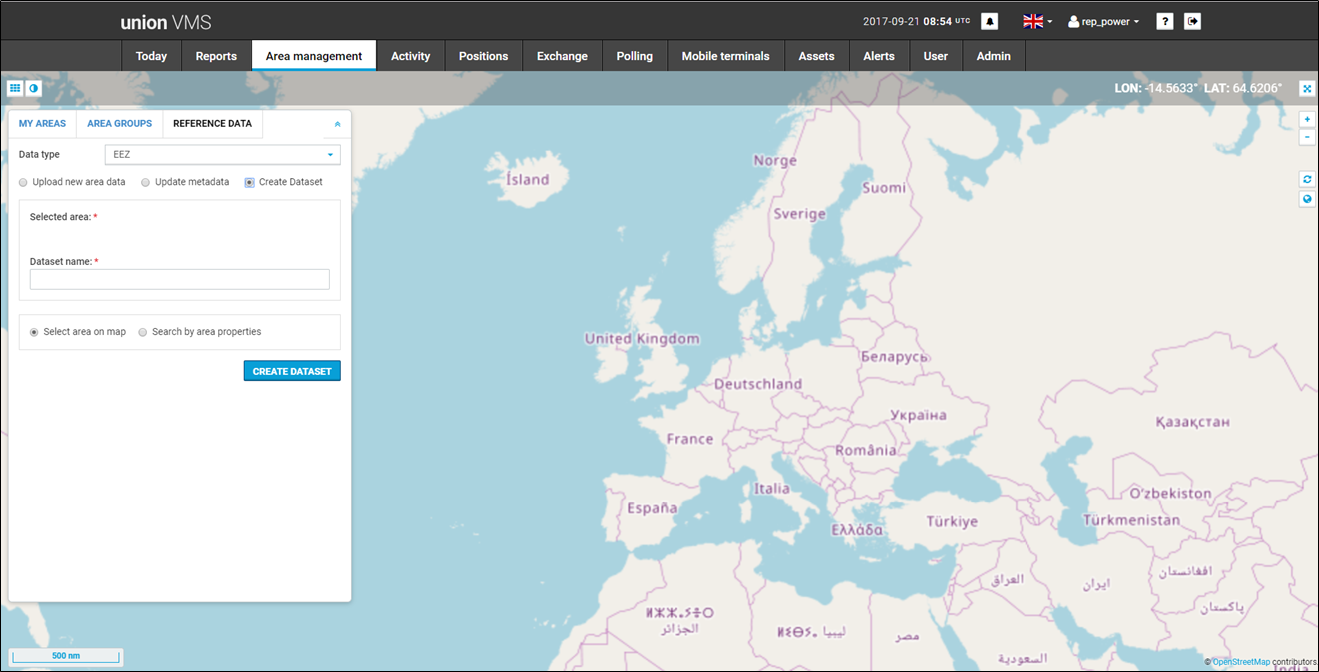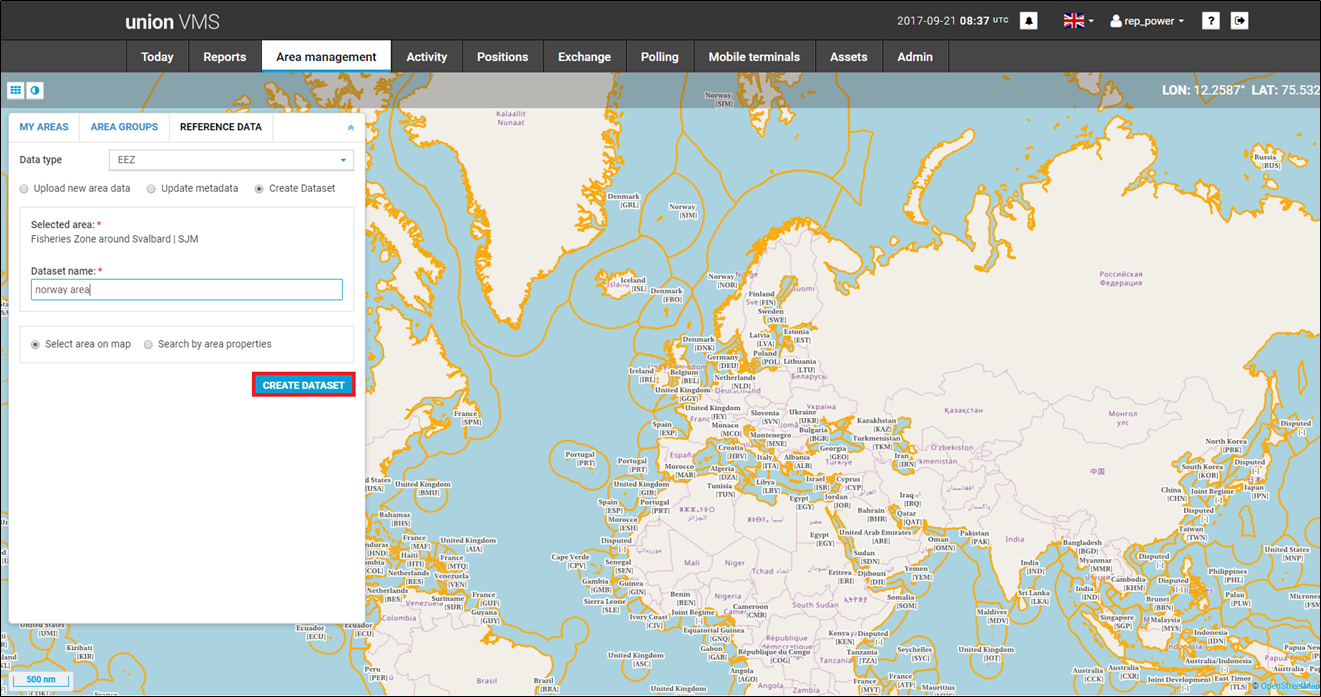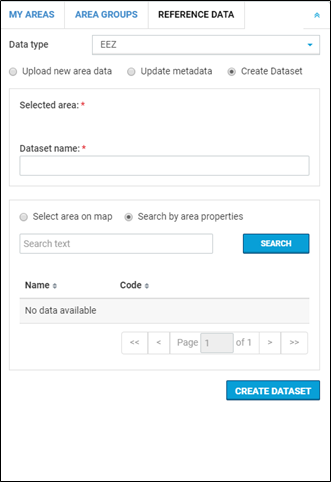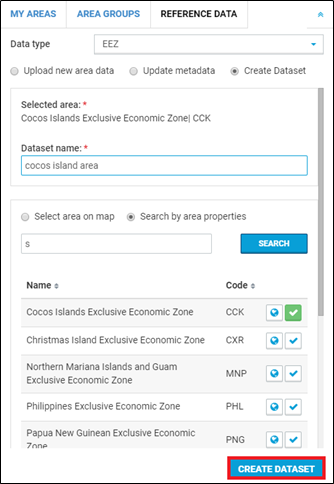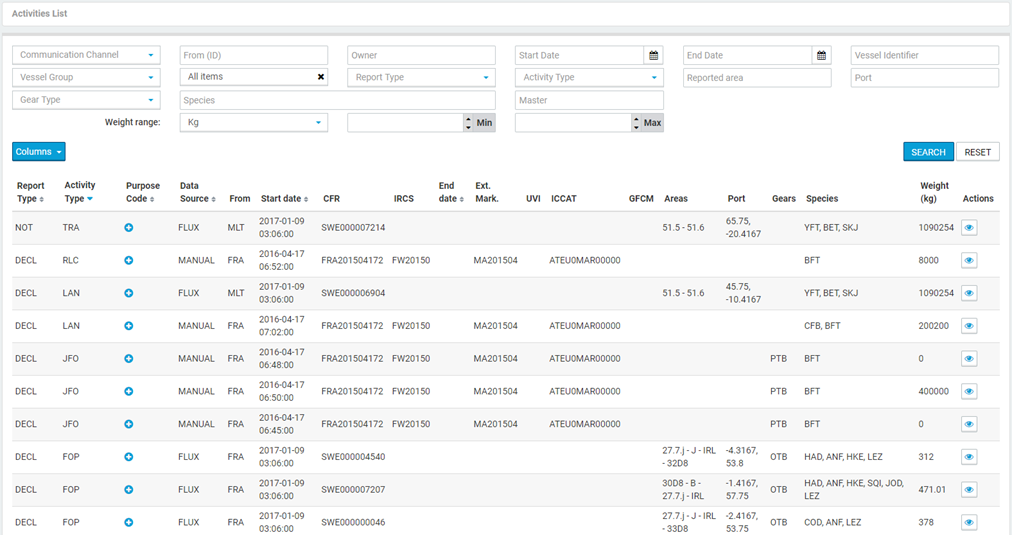| Info |
|---|
| Note: The teams working on Union VMS try to keep the manual as up-to-date as possible. If you see any differences in the current GUI, please help us by contributing to the manual with the latest information. |
...
The "Reports" in the main menu shows a live view over were reporting assets are located. This page displays all the accessible reports for the user. The "Reports" page is divided into "Line view" and "Reports"
...
Live view
Map
| 1 Refresh | 2 Eraser |
| – Clear map highlights | 3 Enable map graticule | 4 Fetch alerts from current map | 5 Open tabular view | |
| 6 Bookmarks | 7 Search places | 8 Measure distance | 9 Export map | 10 Toggle full screen |
| 11 Open map on new tab | 12 User preferences | 13 Zoom in/Zoom |
2 Measure distance
| out | 14 Previous extent/ Next extent |
3 Export map
7 User presence settings
| 15 Zoom to full extent |
Measure distance
...
8 Full-screen view
Measure distance
Allows calculation of estimated time of arrival based on the criteria selection of measure configuration panel (supported units are meters, nautical miles and miles):
Export Map
Export the current map view to an image format (supported formats are PNG, JPEG and PDF):
Bookmarks
Bookmarks helps the user to save the current state of the map
- User can create the new bookmark, name the bookmark and click on "Add bookmark" to save the bookmark.
- All the bookmarks are displayed as a list.
- Click on the "globe" button to view the selected bookmark and on "remove" to remove the bookmark from the list.
Zoom in/out
Zoom in/out the map (also works with "+"and "-" keys and mouse wheel)
History
Go back/forward between map navigations (keeps track of the latest 50 steps)
Eraser
Clear map highlights (related to the zoomTo and panTo functionality)
Full-screen
Activates full-screen mode
Layer tree handle
Opens the layers tree and legend panels:
On the layers panel you can specify which layers are visible. Here you can also order the layers (drag and drop) to control the order of the layers over the map.
To get select the position details you select the information icon on node to view all the positions node and then you can select the position on the mapand click on any position to see the position details.
For the segments, you can do the same but instead you have to select it on the segments node:
You can also watch
click on the icon to see the same information in a table on VMS tab:
.
It's also possible to export this data if you click on the export button on the right side of table toolbar in csv format with wkt.
On this specific table there's a filter panel where you can define a parameter for each column. The filtered result will consider all the filters applied.
For every row, you can zoom to or pan to the map to see the presented information:
Report List
This page displays all the accessible reports of the current user to search, update, run and delete existing reports and create new ones.
- Refresh – refreshes the report list
- Edit report – edits settings on report
- Delete report – removes the report
- New report – allow to create a new report
- Run report – runs the selected report and open it on live view like in the following picture:
...
Creating a
...
New Report
There are two types of reports:
- Standard Reports
- Summary Reports
Standard Reports:
On this page the user can create a report and configure different filters. These filters will be applied to the result when the user runs the report.
Positions filter
There are 2 available options; the user can select "Last" or "All".
In case of "All", the user has to type the start and end dates. All positions between these periods will be returned:
If the user selects "Last", he can choose to filter by hours or by positions. When he chooses to filter by hours he will get all positions in the last specified hours:
Otherwise, if he chooses to filter by positions, optionally, he can specify a date range:
There's also the "Include Map" option. With this, the user can activate the map in live view.
...
It's possible to see the details of each vessel or vessel group:
All the current selected vessels are shown under the table and it's possible to delete them.
On the VMS panel, the user can configure all the data related to positions, segments and tracks:
Area Selection filter
On this section is possible to select areas and add them as filters from the report:
On the first field you can choose the layer type and then on the map you can select the area to add in your selection:
On this example, "EEZ" layer type was selected and the areas appeared on the map. Now it's possible to select any area and add it to you current selection. You can also delete previous selected areas.
Another way to select areas is by area properties:
After receiving the filtered results, it's possible to show each area on the map and add it to the area selection with the following buttons:
.
- click "save" button to create the new report
- click "clear" button to clear the all the fileds and the selected filters.
- click "cancel" button to cancel the report creation.
Areas Filter
Area There are two types of area filter. They are System areas and user areas.
- Area can be selected by "select area on map" or by "search by area properties".
- click on "tick" icon to add the area into area selection and also "Add all" is available to add all at once.
- "search" and "reset" options are available to search the areas and clear the selected search respectively.
Example for the areas filter is shown below:
Assets Filter
Assets are selected either by selecting assets or asset group from the dropdown.
- click on "tick" icon to add the asset or assets group into assets selection and also "Add all" is available to add all at once.
- "clear all" button helps to clear all the selected assets from "assets selection".
- For assets "search" option is available to search the assets and "reset" to clear the search .
Positional Data Filter
Fill all the required fields as per the requirement. see the below example of positional data filter
Fishing Activity Data Filter
select all the required filters as per the requirement, see the below example of fishing activity data filter:
Map configurations
The following are the different map configurations available as shown below. click on the ">" icon to add different configuration settings.
Summary Reports:
On this page the user can create a report and configure different filters. These configurations will be applied to the result when the user runs the report.
- click "save" button to create the new report
- click "clear" button to clear the all the fileds and the selected filters.
- click "cancel" button to cancel the report creation.
Note: "select area", "select assets" and "select fishing activity data" are same as the filters of standard report. please refer the standard report for the detailed description.
Output Criteria Filter
Filters can be added from the right side dropdown and then all the selected options are displayed in a tree structure as shown in the figure below
Section 6 Positions
...
If the area is drawn on the map, the coordinates will be automatically filled in.
Coordinates
- To specify area by coordinates, click on the "Coordinates" tab.
...
select "Data type" from the drop down.
Now, there are three options which are as follows
- Upload new area data
- Update metadata
- Create Dataset
To "Upload new area data", follow the below steps:
Now, click on the "upload" button. The following message is displayed if the upload is successful
- To "Update metadata", update the fields and click on the "SAVE METADATA" button :
- To "create Dataset" :
The dataset can be created either by "select area on map" or by "search by area properties".
- The dataset creation by "select area on map", as shown below.
select the area on the map, automatically the name of the selcted area is displayed under "selected area" as shown below
Now, name the dataset and click on the "create dataset" button. A new dataset is created and an alert is displayed if the dataset creation is succesful or not.
...
- The dataset creation by "search by area properties", as shown below.
click on the "create dataset" button to create the dataset. An alert is displayed showing whether the dataset was created successful or not.
...
When the user accesses the activity tab, the first view is the activities list where the user can search for fishing activities.
After thebutton is pressed, the list of fishing activities is displayed according to the applied filters.
Filters
| Field type | Description | |
|---|---|---|
| 1 | Communication Channel | Data source |
| 2 | From (ID) | Country code |
| 3 | Owner | |
| 4 | Start Date | |
| 5 | End Date | |
| 6 | Vessel Identifier | |
| 7 | Vessel Group | |
| 8 | Purpose Code | |
| 9 | Report Type | Notification or declaration |
| 10 | Activity Type | Fishing activity type |
| 11 | Reported area | |
| 12 | Port | |
| 13 | Gear Type | |
| 14 | Species | |
| 15 | Master | |
| 16 | Weight range - Unit | |
| 17 | Weight range - Min | |
| 18 | Weight range - Max |
...
Information about the trip of the fishing activity.
Section 13 MDR (Master data register)
...
-hour;
-day;
-week;
-month;
-year.
In case the user doesn’t want to auto-update all the code lists, it can / in the auto-update column.
...
It’s also possible to visualize the contents of every code list by pressing the button:
Section 14 Glossary
| Term as used in Union VMS | Explanation |
|---|---|
| Application | it is a computer program designed to perform a group of coordinated functions, tasks, or activities. An application can be linked to USM. If so, it means that: The application delegates the user authentication task to USM; The application can request to get or to verify the access rights of a user; The application exposes through a USM service a set of information used by USM to create user contexts; |
| Communication channel | A medium through which a message is transmitted to its intended audience. A communication channel in USM is attached to an endpoint and it specifies the type of messages that could be transmitted through. |
| Context | a context is always for a user but a user may have multiple ones. It is a container of three elements defining his framework for one or multiple applications. In basic terms, the container defines the WWH for each user: 'What can he do', 'What can he see', 'How he wants to see data'. The three elements are: Role: list of permissions to limit the actions of the user (The first W). It is the only mandatory element of a context; |
| Dataset | it is a business information of an application that can be used to limit the access to data for a user, so a kind of filter. An application linked to USM may register in USM the list of his datasets that are used to create the context of a user; |
| Endpoint | it is a technical node in a network used for message exchanges. Technical information is stored in USM at the level of an organisation. |
| Feature | it is a function of an application. An application linked to USM must register in USM the list of his features that are used to give permissions to a user; |
| IDM system | Identity Management system used mainly to manage user data and credentials. |
| LDAP | Lightweight Directory Access Protocol system used to share corporate data like user information across an organisation or over internet. |
| Module | it is a synonym of "application" but this notion implies usually that a module is linked to a parent application. |
| Option | it is a parameter of an application that can be used by users to customize the layout (color of lines …) or the behaviour (refresh rate of a report …) of the application. An option has always a default value. When included in a user context, the option (with a specific value chosen by the user) becomes a user preference. An application linked to USM may register in USM the list of his options that are used to configure the context of a user; |
| Permission | it is a feature in a role affected to a user; |
| Profile | it is the set of all contexts attached to a user; |
| Role | it is a set of permissions on one or multiple applications; |
| Scope | it is a set of datasets from one or multiple applications. The scope is defined to limit the access to data when used in a user context; |
...




















